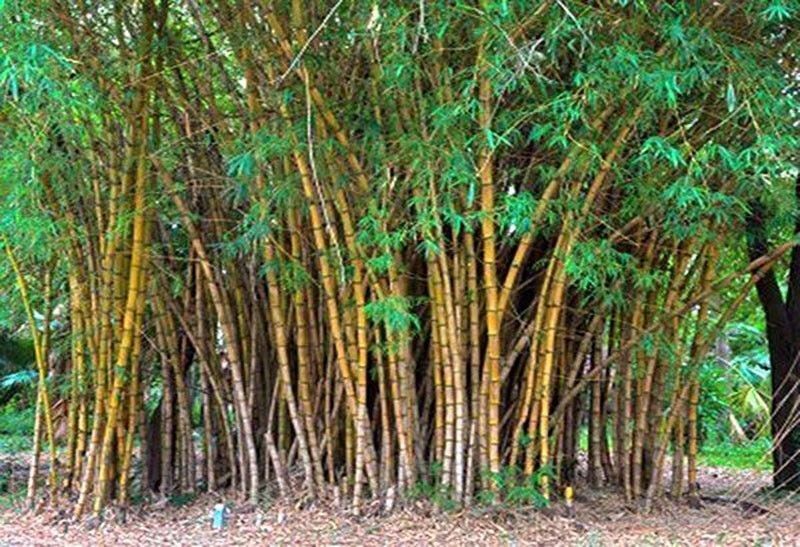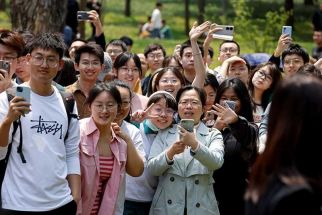Philippines looking into bamboo’s economic potential

MANILA, Philippines — The Philippines is looking to tap the economic potential of pharmaceutical-industrial products based on bamboo varieties that grow in the rivers and volcanic areas of Cagayan Valley.
The Department of Environment and Natural Resources (DENR) partnered with Cagayan State University (CSU)-Gonzaga to carry out a phytochemical screening and DNA barcoding of economically important bamboo species in Cagayan Valley, a first of such studies.
The Bamboo Characterization Project has a total cost of P1.601 million, with P1.261 million shouldered by the DENR and P340,000 from CSU.
The project aims to conserve and propagate the species in typhoon-affected Cagayan Valley as earlier mandated by the DENR.
“Cagayan is rich (in) natural systems, not only agro-ecosystems but grasslands and others like waterfalls and volcanic areas where sulfur-rich soil is found. For example, we will study if the Bayog bamboo species carries different morphological and phytochemical characteristics when they are grown in sulfur-rich volcanic areas,” project leader Jeff Opeña said.
Target for the study are bamboo species that grow in two of Cagayan Valley’s volcanoes – the Smith Volcano, also called Mount Babuyan which is in Calayan Island, and Mount Cagua in Gonzaga.
Alvin Jose Reyes and Eddie Abugan Jr. of the DENR’s Project Management Division said bamboo has numerous industrial, pharmaceutical, phytochemical, medical, nutritional and food advantages.
“Characterization of bamboo germplasm is an important connection between conservation of diversity and utilization of germplasms (seeds or living tissues that carry genetic resources useful in plant breeding and conservation),” they said in their project paper.
So far, CSU has obtained a “gratuitous permit” that allows it to collect bamboo samples to conduct the bamboo characterization in the Palaui Island Protected Landscape and Seascape.
Bamboo has been traditionally characterized based on its flowering frequency or abundance – annual flowering, sporadic or regular flowering and gregarious flowering.
“However, characterization using floral morphology posed a limitation and difficulty due to the requirement of long period of time which can occur in years or even decades,” Reyes and Abugan said.
DNA barcoding will be a modern and innovative way to characterize bamboo species. It will accelerate experts’ identification of the species that they desire to use based on traits – such as fast propagation or medicinal properties.
Moreover, biochemical characterization through phytochemical (plant chemistry) screening enables experts in pharmaceuticals and medicine to detect plant secondary metabolites in bamboo which have utilization potentials in the industry.
While primary metabolites include small molecules like amino acids and sugars, secondary plant metabolites such as alkaloids, anthocyanin, flavonoids, phenols, saponins, steroids, tannins and terpenoids are studied for medicinal plant herbal purposes, among other possible commercial uses.
In November 2020, former DENR secretary Roy Cimatu ordered the extensive propagation of bamboo in Cagayan Valley to prevent massive flooding that plagued the province arising from Typhoon Ulysses.
Bamboo is also being planted in the rivers of Marikina and Bicol – areas usually flooded during typhoons.
Aside from preventing flooding effects of typhoons, the DENR also aims to use bamboo as a tool for climate change mitigation as it is known to sequester five metric tons of carbon dioxide per hectare of plantation.
The agency is also promoting engineered bamboo as lumber substitute.
Executive Order 879 created the Philippine Bamboo Industry Development Council and mandated that 25 percent of the annual school desks of the Department of Education should be made of bamboo.
While it has extensive use as raw material in many industries, the Philippines’ bamboo export slowed from a high of 106,000 kilos in 2011 to 35,000 in 2015 and even further lower to 8,000 kilos in 2018. Exports just picked up to 66,000 kilos in 2020.
The DENR bamboo project is seen over the long term to help boost bamboo exports.
- Latest
- Trending



























